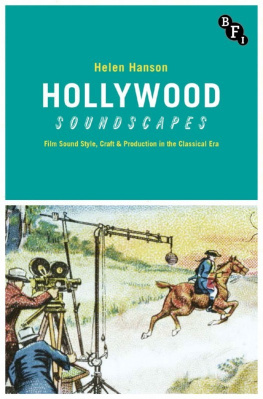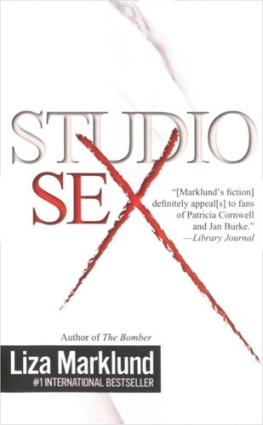Peter Lev - Twentieth Century-Fox: The Zanuck-Skouras Years, 1935–1965
Here you can read online Peter Lev - Twentieth Century-Fox: The Zanuck-Skouras Years, 1935–1965 full text of the book (entire story) in english for free. Download pdf and epub, get meaning, cover and reviews about this ebook. year: 2013, publisher: University of Texas Press, genre: Non-fiction. Description of the work, (preface) as well as reviews are available. Best literature library LitArk.com created for fans of good reading and offers a wide selection of genres:
Romance novel
Science fiction
Adventure
Detective
Science
History
Home and family
Prose
Art
Politics
Computer
Non-fiction
Religion
Business
Children
Humor
Choose a favorite category and find really read worthwhile books. Enjoy immersion in the world of imagination, feel the emotions of the characters or learn something new for yourself, make an fascinating discovery.

- Book:Twentieth Century-Fox: The Zanuck-Skouras Years, 1935–1965
- Author:
- Publisher:University of Texas Press
- Genre:
- Year:2013
- Rating:3 / 5
- Favourites:Add to favourites
- Your mark:
- 60
- 1
- 2
- 3
- 4
- 5
Twentieth Century-Fox: The Zanuck-Skouras Years, 1935–1965: summary, description and annotation
We offer to read an annotation, description, summary or preface (depends on what the author of the book "Twentieth Century-Fox: The Zanuck-Skouras Years, 1935–1965" wrote himself). If you haven't found the necessary information about the book — write in the comments, we will try to find it.
This sweeping and vivid history presents the innovative studio from its initial merger to the enormous success of The Sound of Music, combining film analysis with the interconnected histories of the studio, its executives, and the industry at large.
Peter Lev: author's other books
Who wrote Twentieth Century-Fox: The Zanuck-Skouras Years, 1935–1965? Find out the surname, the name of the author of the book and a list of all author's works by series.
Twentieth Century-Fox: The Zanuck-Skouras Years, 1935–1965 — read online for free the complete book (whole text) full work
Below is the text of the book, divided by pages. System saving the place of the last page read, allows you to conveniently read the book "Twentieth Century-Fox: The Zanuck-Skouras Years, 1935–1965" online for free, without having to search again every time where you left off. Put a bookmark, and you can go to the page where you finished reading at any time.
Font size:
Interval:
Bookmark:
TWENTIETH CENTURY-FOX
TWENTIETH CENTURY-FOX
THE ZANUCK-SKOURAS YEARS, 19351965
by Peter Lev

University of Texas Press
Austin
Copyright 2013 by the University of Texas Press
All rights reserved
Printed in the United States of America
First edition, 2013
Requests for permission to reproduce material from this work should be sent to:
Permissions
University of Texas Press
P.O. Box 7819
Austin, TX 787137819
http://utpress.utexas.edu/about/book-permissions
Library of Congress Cataloging-in-Publication Data
Lev, Peter, 1948
Twentieth Century-Fox: the Zanuck-Skouras years, 19351965 / by Peter Lev. 1st ed.
p. cm.
Includes bibliographical references and index.
ISBN 978-0-292-74447-9 (cloth : alk. paper)
1. Twentieth Century-Fox Film CorporationHistory. I. Title.
PN1999.T8L38 2013
384'.80979494dc2012025773
doi:10.7560/744479
ISBN: 978-0-292-74448-6 (e-book)
ISBN: 9780292744486 (individual e-book)
TO YVONNE AND YVETTE
Contents
Acknowledgments
Let me begin by thanking the Film Scholars Program, Academy of Motion Picture Arts and Sciences, for generously supporting my work. Sid Ganis, past President of the Academy, was welcoming and helpful; he even gave me an interview about his work at Fox in New York. To the Institutional Grants Committee and Andrew Marlowe, chair of the Committee, my profound thanks. Shawn Guthrie handled administrative matters, large and small. As I quickly learned, a Scholars Award carries a good bit of prestige!
Warmest thanks to the many individuals and institutions that assisted me. Thomas Leitch and Joanna Rapf, my readers and peer reviewers, did an excellent job of pinpointing the manuscripts strengths and weaknesses. Lawrence Suid shared his research materials and his encyclopedic knowledge of the Hollywood war film. Barbara Hall of the Margaret Herrick Library, Academy of Motion Picture Arts and Sciences, guided me through the many treasures of the Special Collections department. Ned Comstock, archivist at the USC Cinematic Arts Library, was, like Barbara, uncannily able to anticipate my needs. Robert Shandley of Texas A & M and Rebecca Prime of Hood College invited me to their institutions to lecture on Fox. At Towson University, Barry Moore, Greg Faller, Dave Reiss, Maravene Loeschke, Kit Spicer, Robert Caret, Richard Vatz, and the Faculty Research Committee strongly supported my work.
Thanks to Jim Burr, my editor at University of Texas Press, for his consistent support and encouragement. Thanks also to copyeditor Jennifer Dropkin, managing editor Leslie Tingle, and the entire staff at University of Texas Press.
And from West to East, let me thank the following.
In Palo Alto, California: Department of Special Collections, Stanford University Libraries.
In Los Angeles: Don and Sue Silver, Rush White, Nicholas Cull, Margaret Herrick Library, UCLA Performing Arts Special Collections, UCLA Special Collections, USC Cinematic Arts Library, AFI Library, and Larry Edmonds Bookstore.
In Lawrence, Kansas: John C. Tibbetts.
In Madison, Wisconsin: Wisconsin Center for Film and Theater Research.
In Athens, Ohio: Doug McCabe and Ohio University Archives and Special Collections.
In Washington, DC: John Buchtel, Scott Taylor, David Hagen, Georgetown University Special Collections, and the Motion Picture Reading Room, Library of Congress.
In Baltimore: Steve Libowitz, Gary Harner, Albert S. Cook Library at Towson University, Milton Eisenhower Library at Johns Hopkins University, and LoyolaNotre Dame University Library.
In Salisbury, Maryland: Jim Welsh, Elsie Walker, Dave Johnson, Brenda Grodzicki, and Literature/Film Quarterly.
In New York City: Liz Kurtulik, Art Resource, and the New York Public Library.
In Groton, Massachusetts: William Quigley and Quigley Publishing.
In Bath, UK: Brian Neve.
An earlier version of my section on The Longest Day in was published in Literature/Film Quarterly as Peter Lev, Filming The Longest Day: Conflicting Interests, Literature/Film Quarterly 33, no. 4 (2005): 6369, and is reprinted with permission.
Thanks to my family for motivating and inspiring me over the last several years. Without family it would be hard to get up in the morning, let alone write a book. Yvonne Lev, Sara Lev, Mike Sloan, and darling Evie Sloan (born 2011): Thank you!
TWENTIETH CENTURY-FOX
Introduction
My preparation for this project began about the year 2002, when I was writing a book on Hollywood in the 1950s. I noticed that among the studios Twentieth Century-Fox had the best story to tellhuge triumphs and failures, excellent films, extraordinary characters. With a little research I found that Twentieth Century-Foxs first thirty years covered a great sweep of film history, from the Shirley Temple years to the World War II boom, the challenge of television, the Hollywood Blacklist, and the expensive and scandalous production of Cleopatra. Dozens of interesting characters were involvedthe actors Tyrone Power, Betty Grable, Gregory Peck, and Marilyn Monroe; the directors John Ford, Henry King, Elia Kazan, Otto Preminger, and Joseph L. Mankiewicz; the writers John Steinbeck, Nunnally Johnson, Lamar Trotti, Philip Dunne, and Ring Lardner Jr.; the producers Jerry Wald and Walter Wanger; and so on. The story goes from the specific to the general, following the thoroughly connected histories of Twentieth Century-Fox, the Hollywood film industry, and the United States of America. But most of all the story is about two powerful executives, Darryl F. Zanuck and Spyros Skouras, who represent two distinct aspects of the film industry.
Twentieth Century-Fox was created by the merger of Fox Film Corporation and Twentieth Century Pictures in 1935. Fox Film was a pioneer film company, tracing its roots to William Foxs purchase of a Brooklyn nickelodeon in 1904. Sidney Kent, President of Fox Film, merged his company with the much smaller Twentieth Century Pictures in 1935 because Twentieth Century had shown a consistent ability to make high-quality films while controlling costs. The major assets of Twentieth Century were its executives, film industry veteran Joseph Schenck and young but gifted head of production Darryl F. Zanuck. The new Twentieth Century-Fox was no threat to MGM or Paramount in its first few years, but Kent, Zanuck, and Schenck quickly built it into one of the most important Hollywood studios. In 1942 Sidney Kent died; Spyros Skouras, his replacement as president, would with Zanuck guide the company for the next few decades.
My history of Twentieth Century-Fox begins with the 1935 merger and ends with the great success of The Sound of Music in 1965. Then there is a brief epilogue because peer reviewers and my students at Towson University wanted to see the rest of the story. Any studio history is challenging since it must deal with economic, political, and social history as well as describe the production of hundreds or thousands of films. My history of Fox is more original and more challenging than most studio histories because it describes and analyzes the activities of both the New York office and the Hollywood production studio. In the 1930s and 1940s Twentieth Century-Fox included a New Yorkbased distribution and exhibition business and a Los Angelesbased production business. In the 1950s, after the consent decree that forced the divestiture of the exhibition chain, these two operations were uncomfortably blended.
American film history has heavily focused on Hollywood studio activities rather than on the New York headquarters functions of the largest film companies. That is understandable because historians, like the general public, are strongly attracted to the motion pictures themselvesthe stars, the stories, the visual styles, the social issues. However, the Hollywood studios of MGM, Paramount, Fox, Warner Bros., and RKO were not autonomous units. These five companies integrated production, distribution, and exhibition, and most of the high-level corporate decisions were handled in New York. At Fox, for example, the New York office took charge of corporate strategy, finances, government relations, distribution, exhibition, new technologies, and international relations. How could one write a history of a Hollywood film company without including these functions?
Next pageFont size:
Interval:
Bookmark:
Similar books «Twentieth Century-Fox: The Zanuck-Skouras Years, 1935–1965»
Look at similar books to Twentieth Century-Fox: The Zanuck-Skouras Years, 1935–1965. We have selected literature similar in name and meaning in the hope of providing readers with more options to find new, interesting, not yet read works.
Discussion, reviews of the book Twentieth Century-Fox: The Zanuck-Skouras Years, 1935–1965 and just readers' own opinions. Leave your comments, write what you think about the work, its meaning or the main characters. Specify what exactly you liked and what you didn't like, and why you think so.








